LaTeX templates and examples — Two-column
Recent
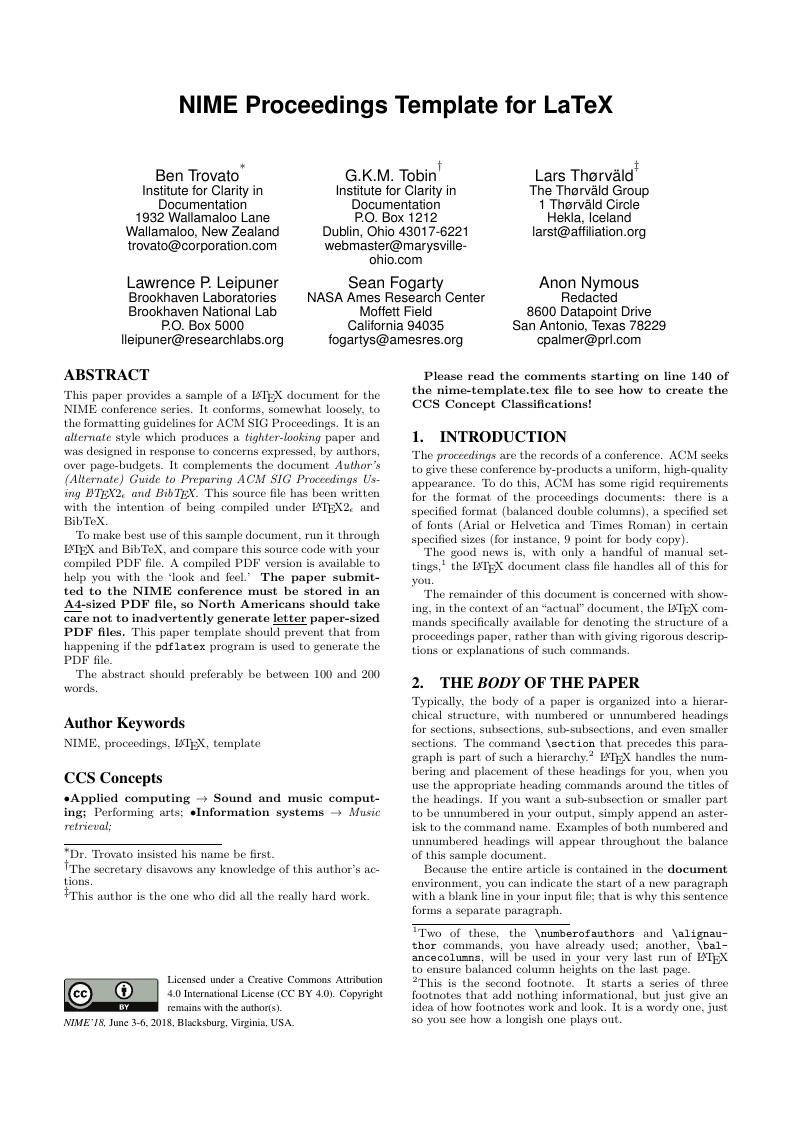
This paper provides a sample of a LATEX document for the NIME conference series. It conforms, somewhat loosely, to the formatting guidelines for ACM SIG Proceedings. It is an alternate style which produces a tighter-looking paper and was designed in response to concerns expressed, by authors, over page-budgets. It complements the document Author’s (Alternate) Guide to Preparing ACM SIG Proceedings Using LATEX2ε and BibTEX. This source file has been written with the intention of being compiled under LATEX2ε and BibTeX.
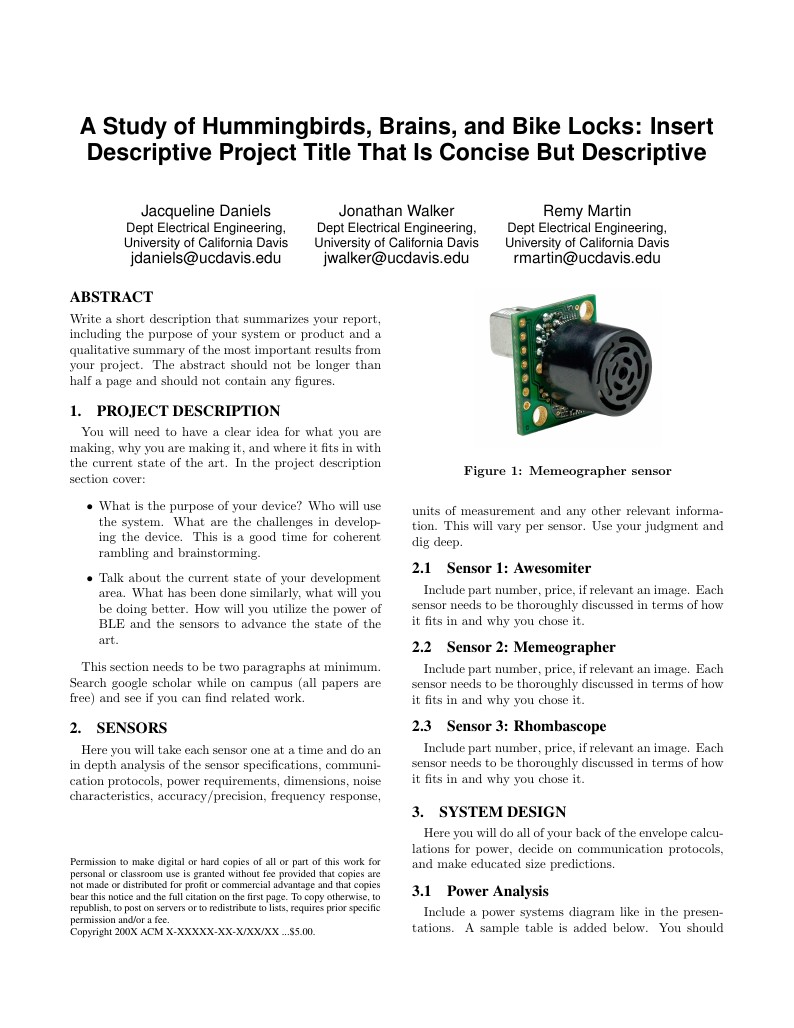
Template for final project reports for EEC 136AB Electronics Design Project, a senior capstone team-based design course at UC Davis.

Lab report template
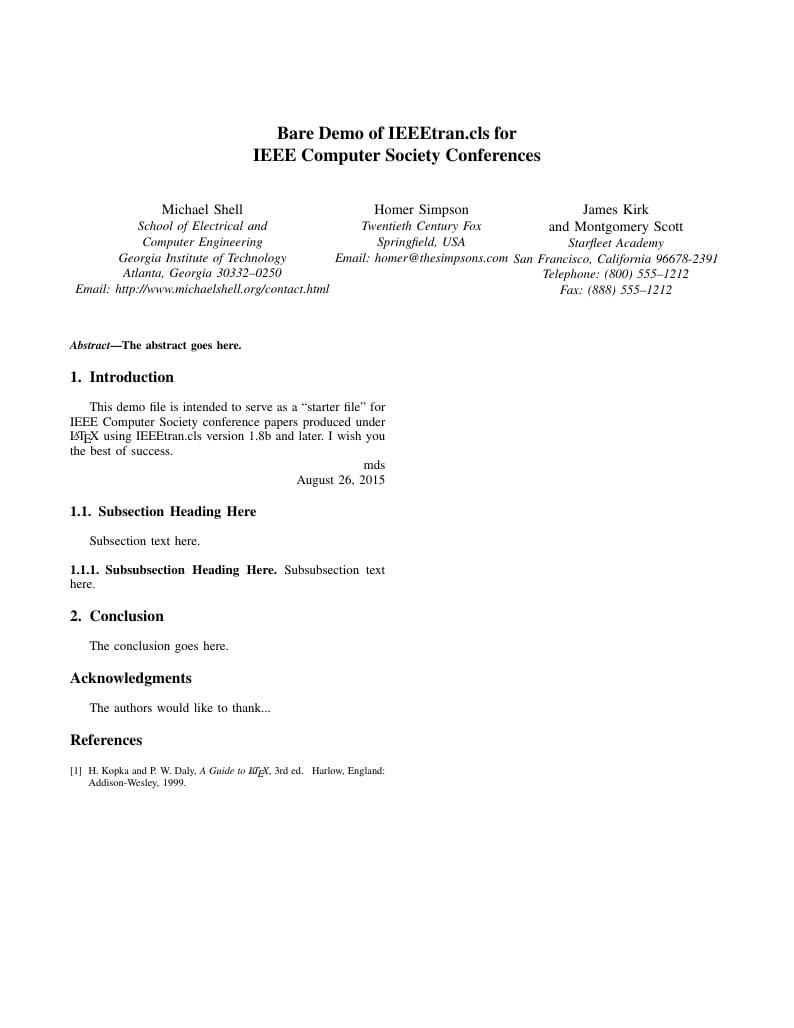
This is a skeleton file demonstrating the use of IEEEtran.cls (requires IEEEtran.cls version 1.8b or later) with an IEEE Computer Society conference paper. For other IEEE conferences, please see the IEEE conference paper template, and to find additional IEEE templates please use the tags below. IEEEtran.cls version: 1.8b
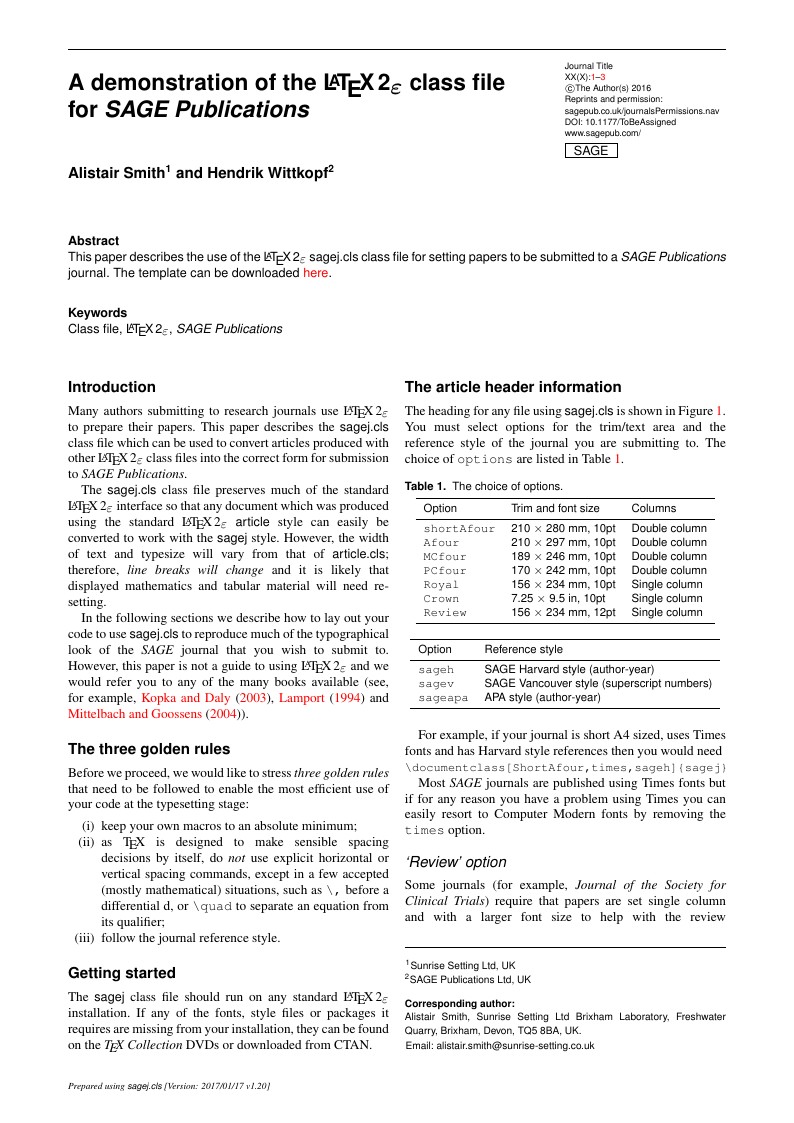
This paper describes the use of the LaTeX2e sagej.cls class file for setting papers to be submitted to a SAGE Publications journal. The template can be downloaded here. v1.2, 14 Jan 2017
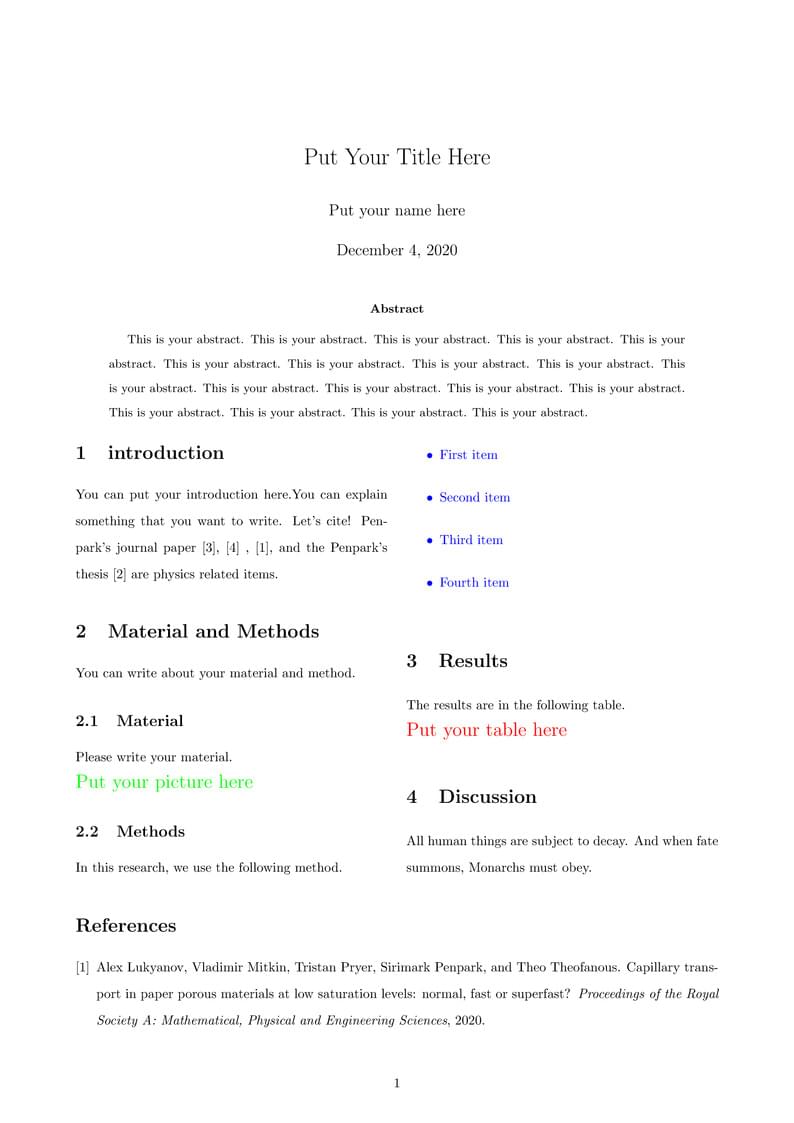
I would like to share this template for the beginner of writing article
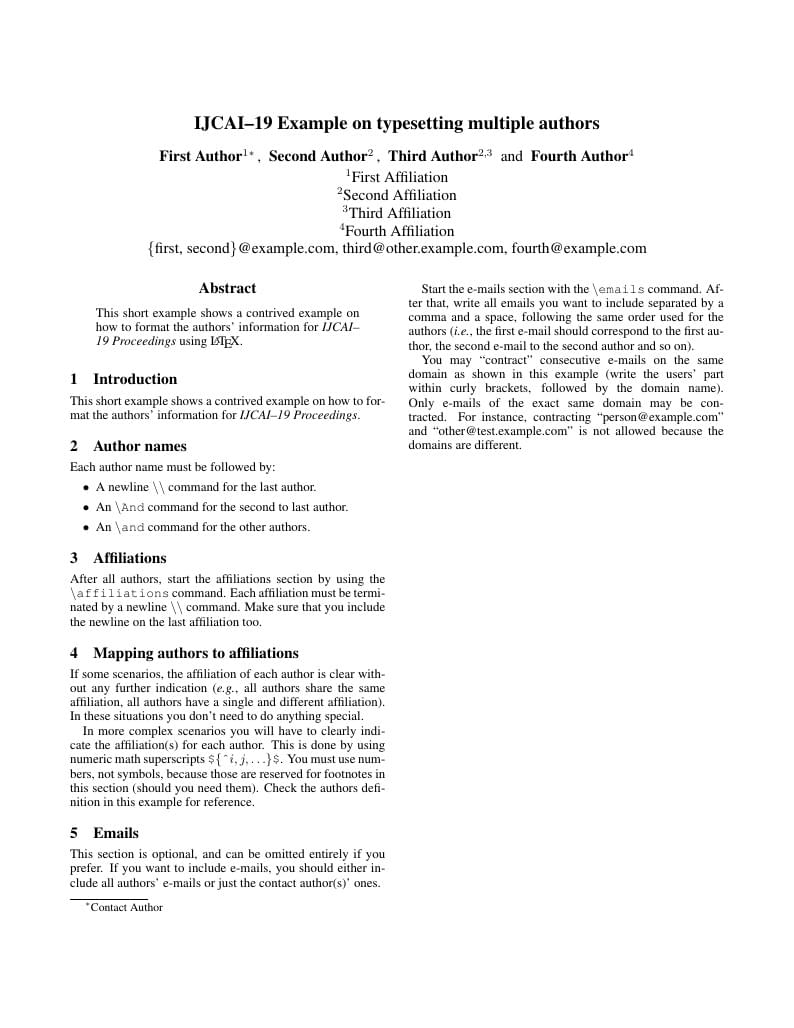
Template for Submission to IJCAI-19; downloaded from the conference's Author's Kit page.
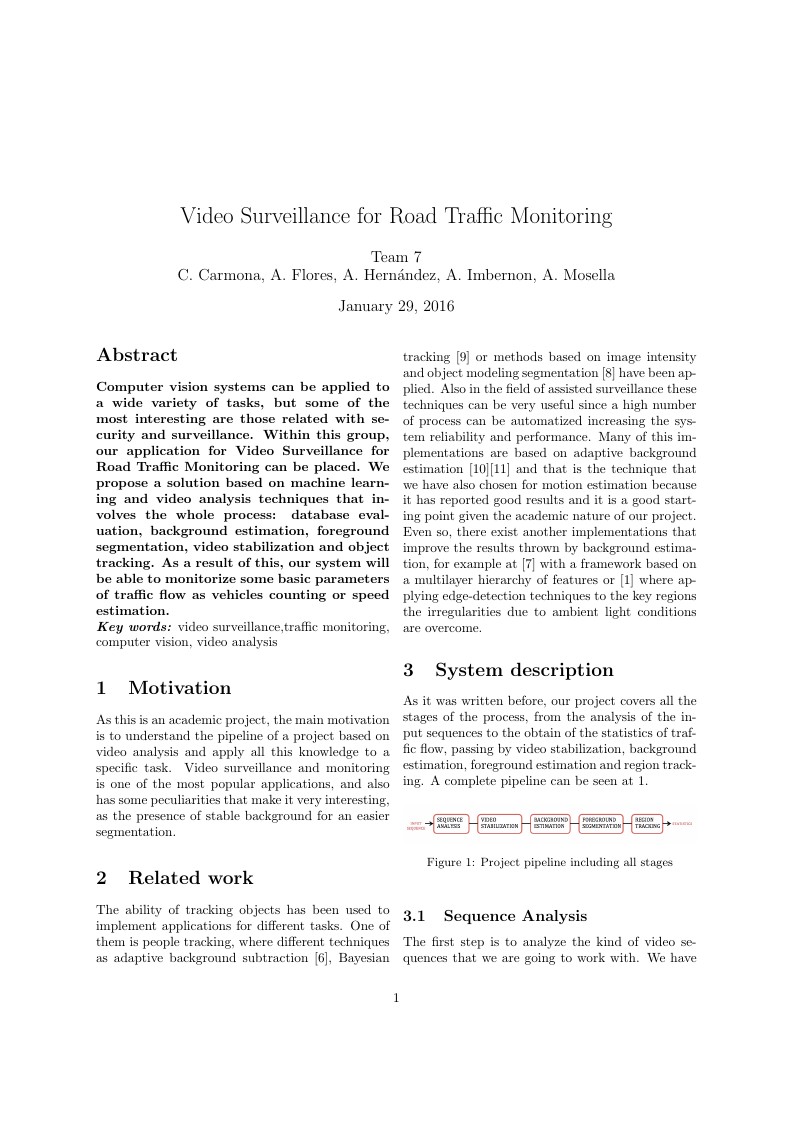
Computer vision systems can be applied to a wide variety of tasks, but some of the most interesting are those related with security and surveillance. Within this group, our application for Video Surveillance for Road Traffic Monitoring can be placed. We propose a solution based on machine learning and video analysis techniques that involves the whole process: database evaluation, background estimation, foreground segmentation, video stabilization and object tracking. As a result of this, our system will be able to monitorize some basic parameters of traffic flow as vehicles counting or speed estimation.
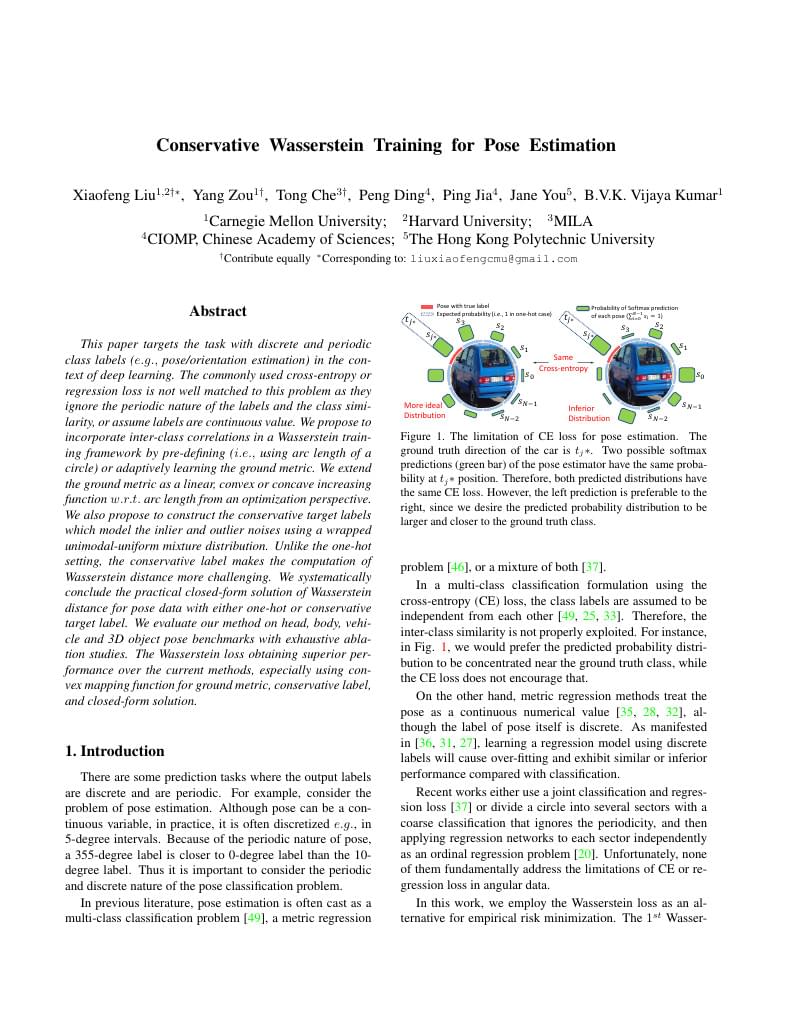
Paper presented at ICCV 2019. This paper targets the task with discrete and periodic class labels (e.g., pose/orientation estimation) in the context of deep learning. The commonly used cross-entropy or regression loss is not well matched to this problem as they ignore the periodic nature of the labels and the class similarity, or assume labels are continuous value. We propose to incorporate inter-class correlations in a Wasserstein training framework by pre-defining (i.e., using arc length of a circle) or adaptively learning the ground metric. We extend the ground metric as a linear, convex or concave increasing function w.r.t. arc length from an optimization perspective. We also propose to construct the conservative target labels which model the inlier and outlier noises using a wrapped unimodal-uniform mixture distribution. Unlike the one-hot setting, the conservative label makes the computation of Wasserstein distance more challenging. We systematically conclude the practical closed-form solution of Wasserstein distance for pose data with either one-hot or conservative target label. We evaluate our method on head, body, vehicle and 3D object pose benchmarks with exhaustive ablation studies. The Wasserstein loss obtaining superior performance over the current methods, especially using convex mapping function for ground metric, conservative label, and closed-form solution.
\begin
Discover why over 20 million people worldwide trust Overleaf with their work.